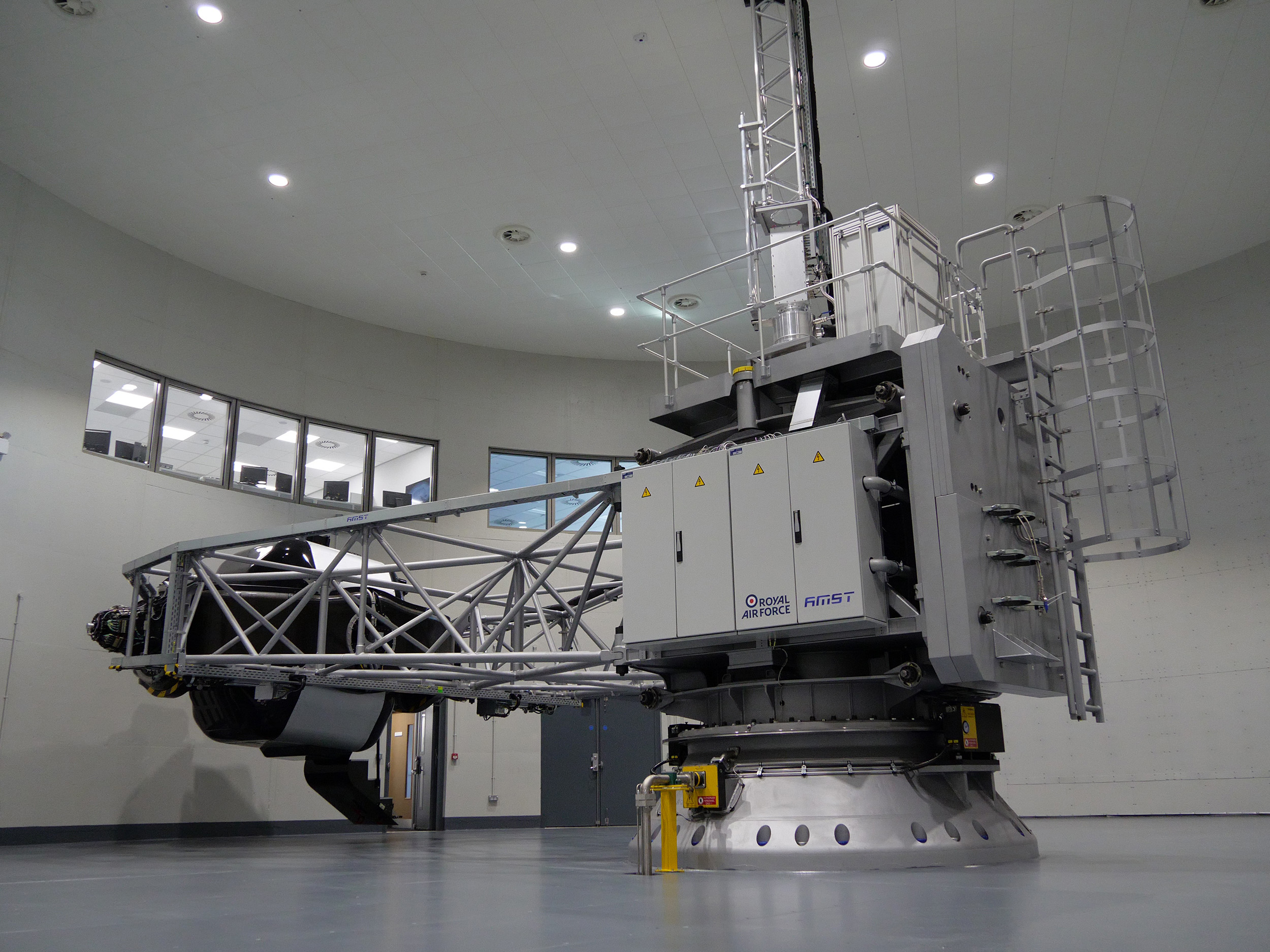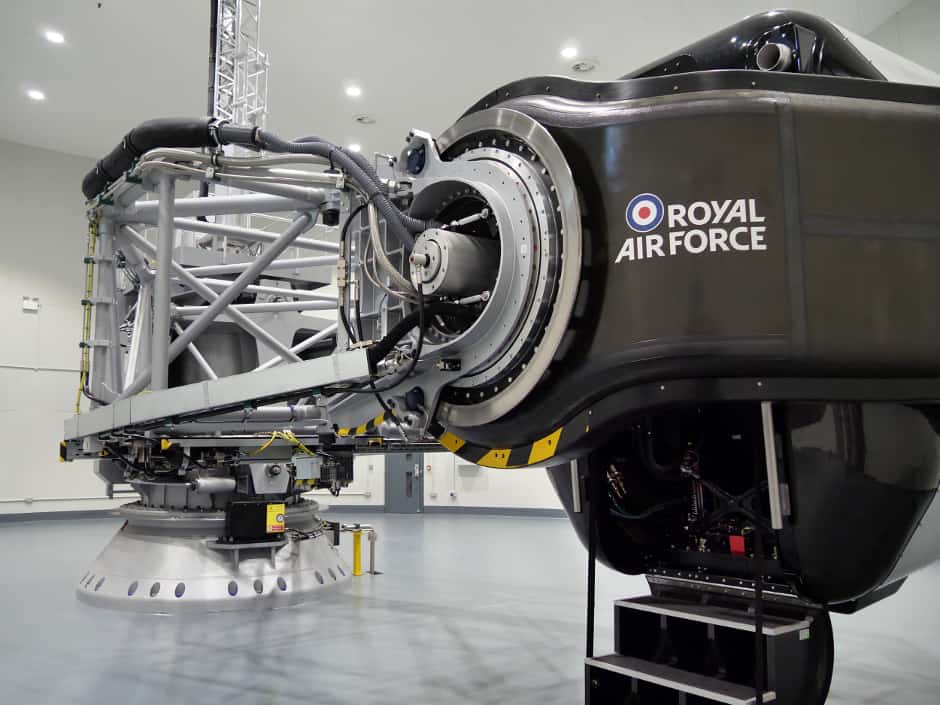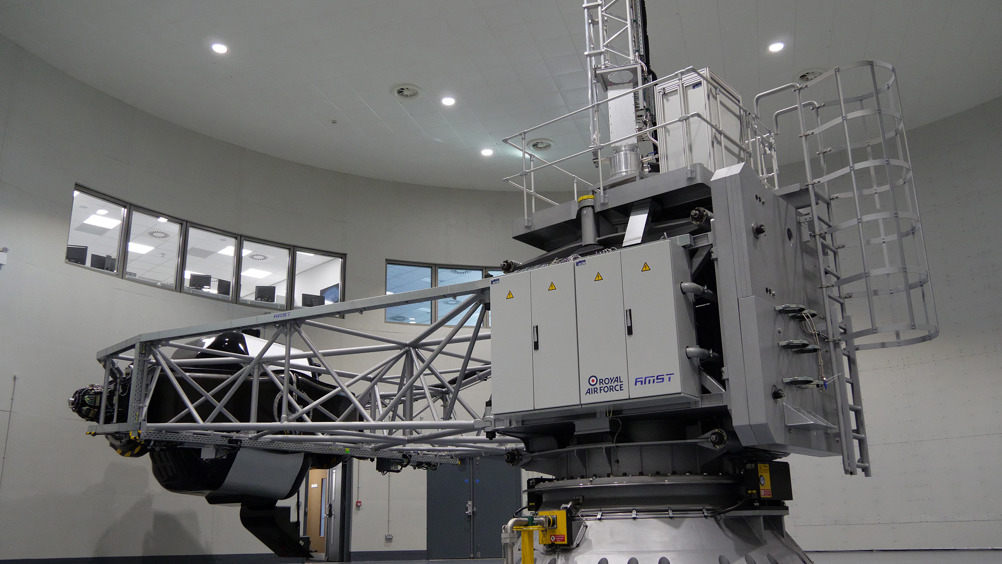
The £44m High-G training Facility, built for the Ministry of Defence by Thales UK alongside centrifuge specialists AMST from Austria, will allow RAF and Royal Navy pilots to experience up to 9G – nine times the normal gravitational pull of the Earth.
But unlike the 1950s-built training centrifuge it replaces, the new system is also equipped with a virtual cockpit that will allow pilots to learn how to use their specialist flying equipment to cope with the stresses of high G-forces.
The system, located at RAF Cranwell, is designed to replicate flight in jets such as the Hawk, Typhoon and new F-35 Lightning aircraft.
The onset of High-G is a significant issue for combat aircraft, according to Stephen McCann, VP for avionics at Thales UK.
“Previously pilots would have just gone round and round (in the centrifuge), experiencing the G, which is not as effective as it could be from a training perspective,” said McCann. “With this new device they will experience cockpits that are very close to the real thing,” he said.
The facility, which was officially opened by Air Chief Marshall Sir Stephen Hillier today, February 4, 2019, will allow pilots to carry out a range of training scenarios, including air-to-air combat and in-bound missile threats.
The 39-tonne centrifuge can accelerate up to 9G in just one second, and rotate at up to 34 times per minute.

The system will also be used to test new equipment, such as helmets and other safety equipment for air crew, before they are trialled in live flight.
The device features a single 7.5m arm, on the end of which is a gondola that has the power to provide dynamic G performance.
The new facility will be used by fast jet pilots progressing through the UK Military Flying Training System and into their flying careers. Pilots will refresh their training at least every five years to keep them up to date with the techniques used to handle High-G forces in flight.
“The equipment was designed to give the RAF the highest safety capability for their aircrew,” said McCann.
The first trainees began using the system in December.
The RAF Centre of Aviation Medicine is using the facility to train aircrew to recognise the effects of G-force, develop awareness of it and learn the physical techniques needed to counter the effects on their bodies during combat missions. Up to 300 aircrew will receive training on the centrifuge each year.





Nanogenerator consumes CO2 to generate electricity
Whoopee, they've solved how to keep a light on but not a lot else.